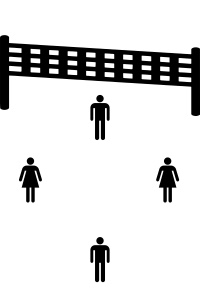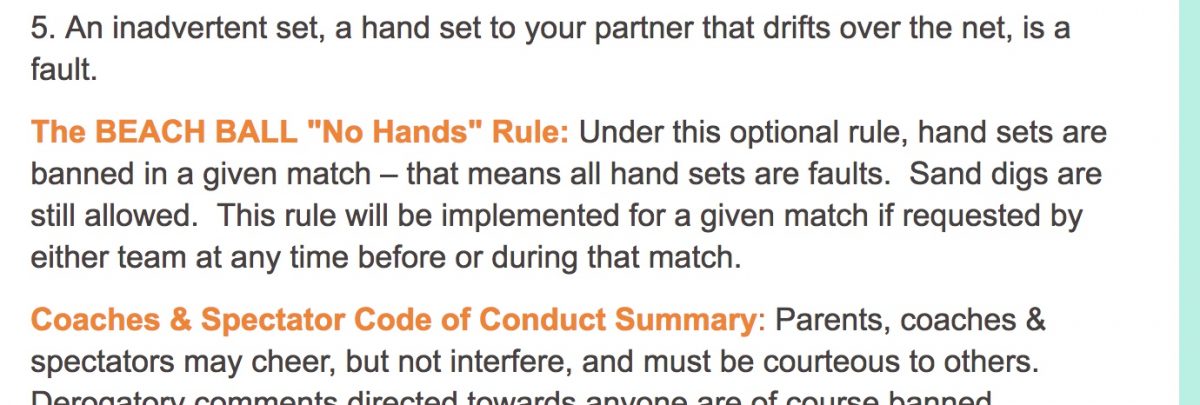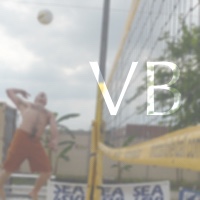The convention of most teams in beach quads format is the “diamond” formation when receiving serve – the players orient themselves with three players staggered in a V formation, and the setter at the apex nearest the net. 
The idea here is that the ball is passed close to the net where the setter is then able to send it to one of the two player flanking to finish the kill. As discussed before, using the net as a orientation system has its disadvantages, but another issue with this strategy is the three-person receive formation. The weakest point of any serve receive formation is the “seam” between any two players, where communication is weakest, particularly with athletes conditioned to keep their eyes on the ball at all times (an issue to be addressed at another time). And in the “diamond” formation, there are two possible seams, one on either side of the middle back player. A simple fix is thus to reduce the number of seams — use a two player receive strategy.
- Even with the larger sized court, two people are sufficient for serve receive passing – in fact, the doubles game was played on the larger sized court for quite a long time.
- Communication is clearer – unlike a middle player flanked by two potentially mobile barriers, each receiving player only has to deal with the edge of the court, which could potentially be out.
- It frees up a player to run a quicker attack or fake, increasing the odds of a side out.
The key here is to have confidence that the passers will develop the range to control the service, and have good communication with the setter.





